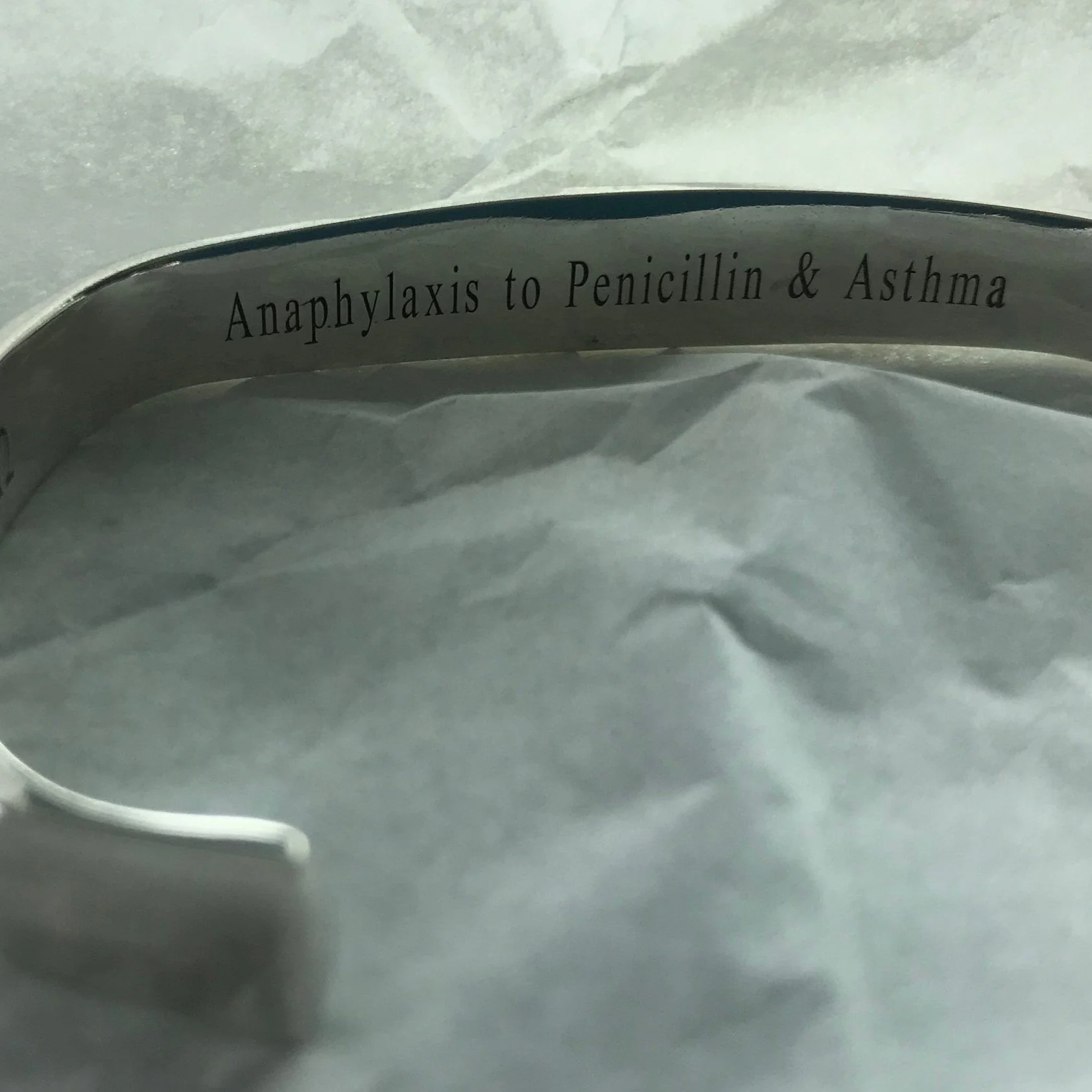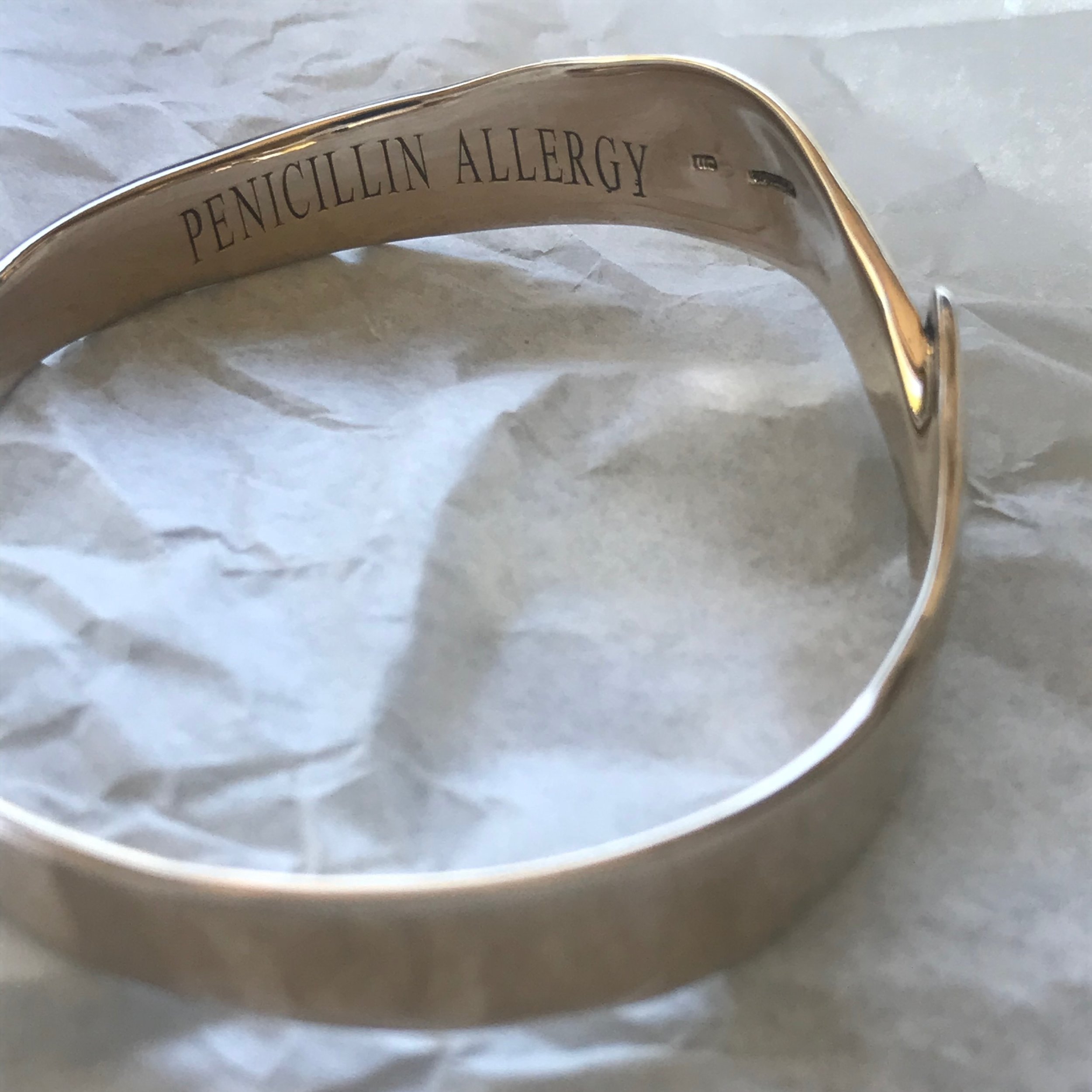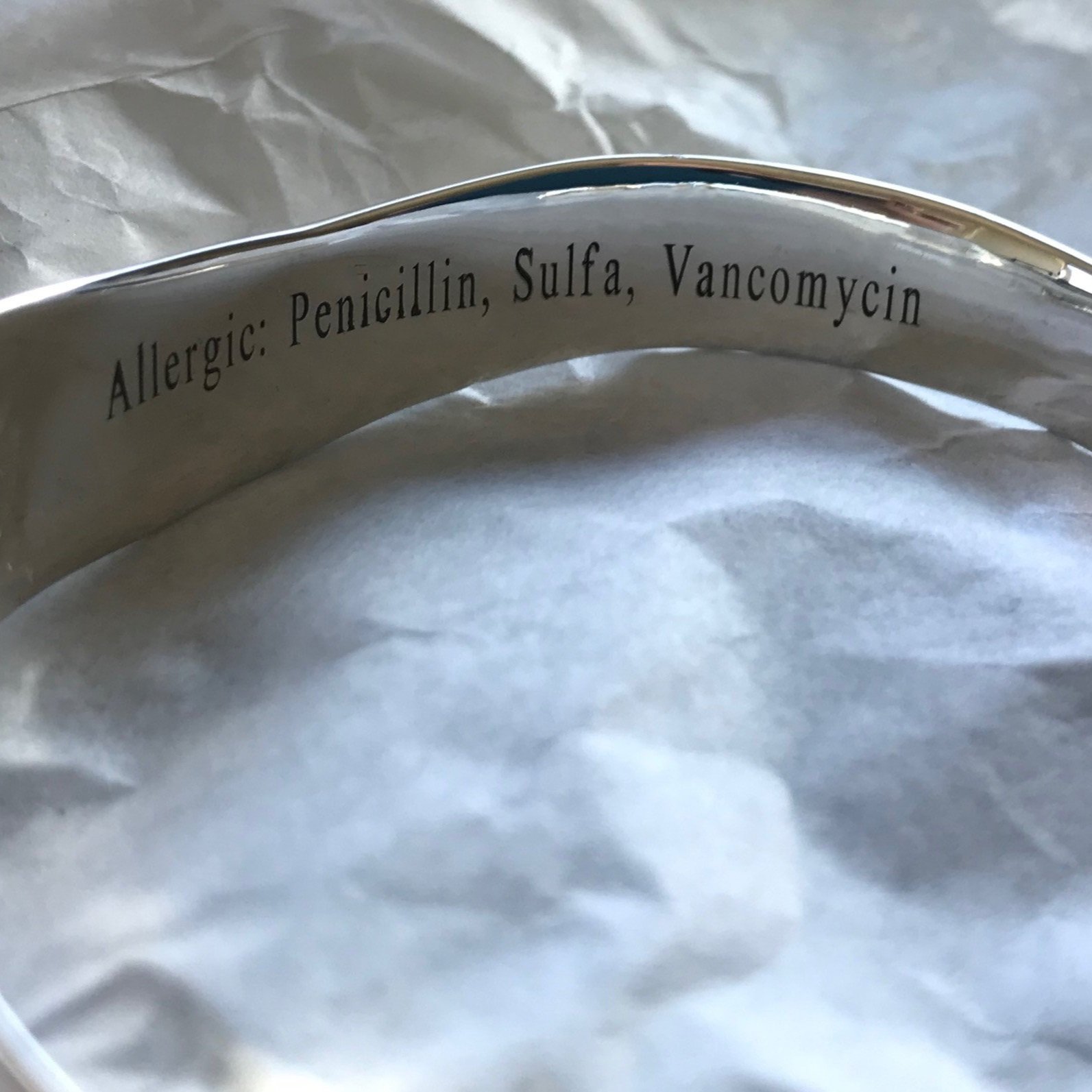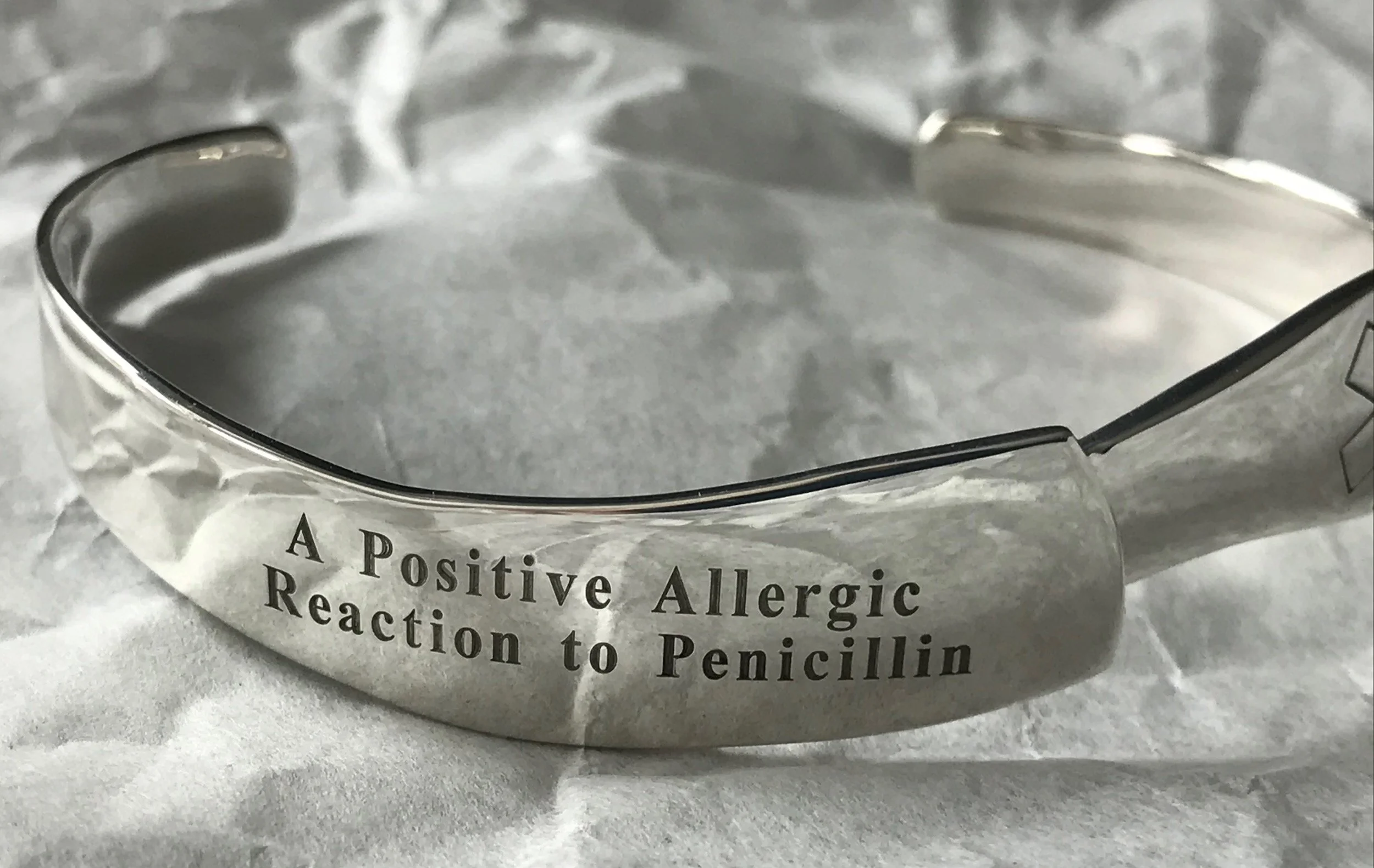Drug Allergy Bracelets
Drug allergies are a type of allergic reaction that occurs when the immune system overreacts to a medication. They can range from mild to severe, and in some cases, can be life-threatening. It is essential for people who have a known drug allergy to be aware of the symptoms and treatment options available, as well as the importance of wearing a medical ID bracelet or necklace to ensure that medical professionals are aware of their condition in case of an emergency.
Common Drug Allergies
Penicillin: Penicillin is an antibiotic that is commonly used to treat bacterial infections such as strep throat and pneumonia. It is also one of the most common drugs that people are allergic to. The symptoms of a penicillin allergy can range from mild skin rash to severe anaphylaxis. If you are allergic to penicillin, it is important to wear a medical alert bracelet so that first responders can be aware of your allergy and provide appropriate treatment.
Sulfa Drugs: Sulfa drugs are a group of antibiotics that are commonly used to treat infections such as urinary tract infections and pneumonia. Sulfa drugs can cause a range of allergic reactions, from mild skin rash to severe anaphylaxis. If you are allergic to sulfa drugs, it is important to wear a medical alert bracelet so that first responders can be aware of your allergy and provide appropriate treatment.
Non-Steroidal Anti-Inflammatory Drugs (NSAIDs): NSAIDs are a group of drugs that are commonly used to relieve pain and inflammation, such as ibuprofen and aspirin. NSAIDs can cause a range of allergic reactions, from mild skin rash to severe anaphylaxis. If you are allergic to NSAIDs, it is important to wear a medical alert bracelet so that first responders can be aware of your allergy and provide appropriate treatment.
Chemotherapy Drugs: Chemotherapy drugs are used to treat cancer by killing cancer cells. These drugs can cause a range of side effects, including allergic reactions. Allergic reactions to chemotherapy drugs can range from mild skin rash to severe anaphylaxis. If you are undergoing chemotherapy and have a history of allergic reactions to these drugs, it is important to wear a medical alert bracelet so that first responders can be aware of your allergy and provide appropriate treatment.
Contrast Dye: Contrast dye is a substance that is used to enhance the images produced by medical imaging tests, such as CT scans and MRI scans. Contrast dye can cause a range of allergic reactions, from mild skin rash to severe anaphylaxis. If you have a history of allergic reactions to contrast dye, it is important to wear a medical alert bracelet so that first responders can be aware of your allergy and provide appropriate treatment.
Local Anesthetics: Local anesthetics are drugs that are used to numb a specific area of the body, such as lidocaine. Local anesthetics can cause a range of allergic reactions, from mild skin rash to severe anaphylaxis. If you have a history of allergic reactions to local anesthetics, it is important to wear a medical alert bracelet so that first responders can be aware of your allergy and provide appropriate treatment.
Insulin: Insulin is a hormone that is used to treat diabetes by regulating blood sugar levels. Insulin can cause a range of allergic reactions, from mild skin rash to severe anaphylaxis. If you have a history of allergic reactions to insulin, it is important to wear a medical alert bracelet so that first responders can be aware of your allergy and provide appropriate treatment.
Symptoms of a Drug Allergy
Symptoms of a drug allergy can vary depending on the severity of the reaction. Some common symptoms of a drug allergy include:
Rash or hives: Patients may develop a rash or hives, which can be itchy and uncomfortable.
Swelling: Patients may experience swelling of the face, lips, tongue, or throat, which can be life-threatening if it interferes with breathing.
Difficulty breathing: Patients may experience difficulty breathing, which can be life-threatening if not treated promptly.
Nausea and vomiting: Patients may experience nausea and vomiting, which can be a sign of a severe allergic reaction.
Anaphylaxis: In severe cases, patients may experience anaphylaxis, which is a life-threatening allergic reaction that can cause difficulty breathing, low blood pressure, and loss of consciousness.
Treatment for a drug allergy may involve
Antihistamines: Patients may be given antihistamines to reduce the symptoms of the allergic reaction.
Epinephrine: In severe cases, patients may be given epinephrine to reduce swelling and improve breathing.
Corticosteroids: Patients may be given corticosteroids to reduce inflammation and prevent a recurrence of the allergic reaction.
Discontinuing the medication: The first step in treating a drug allergy is to discontinue the medication that caused the reaction.
Drug allergies are a common and potentially life-threatening condition that affects millions of people worldwide. If you have a history of allergic reactions to medications, it is important to wear a medical alert bracelet so that first responders can be aware of your allergy and provide appropriate and prompt treatment.
Drug Allergy Online Resources
Allergy & Asthma Network: The Allergy & Asthma Network provides resources for individuals with allergies and asthma. They offer information on various types of allergies, including drug allergies, and provide tips for managing allergic reactions.
Food Allergy Research & Education (FARE): While FARE primarily focuses on food allergies, they also provide information on drug allergies and anaphylaxis (severe allergic reactions). Their resources can help individuals better understand allergic reactions and emergency response.
American Academy of Allergy, Asthma & Immunology (AAAAI): The AAAAI offers information and resources related to various allergies, including drug allergies. Their website provides articles, patient education materials, and guidelines for allergy management.
National Institute of Allergy and Infectious Diseases (NIAID): NIAID, a part of the National Institutes of Health (NIH), provides research-based information on allergies, including drug allergies. Their website offers insights into the latest research and treatment options.
Drug Allergy & Hypersensitivity Foundation: This foundation is dedicated specifically to drug allergies and hypersensitivity reactions. They offer information about various types of drug reactions, management strategies, and research updates.
Asthma and Allergy Foundation of America (AAFA): AAFA provides resources for people with allergies and asthma. Their website includes information about drug allergies, allergy testing, and prevention strategies.
American College of Allergy, Asthma & Immunology (ACAAI): ACAAI offers information and resources related to allergies, asthma, and immunology. They provide educational materials about various allergies, including drug allergies.
World Allergy Organization (WAO): WAO is a global organization that focuses on allergy, asthma, and clinical immunology. They provide resources for healthcare professionals and patients, including information about drug allergies.





